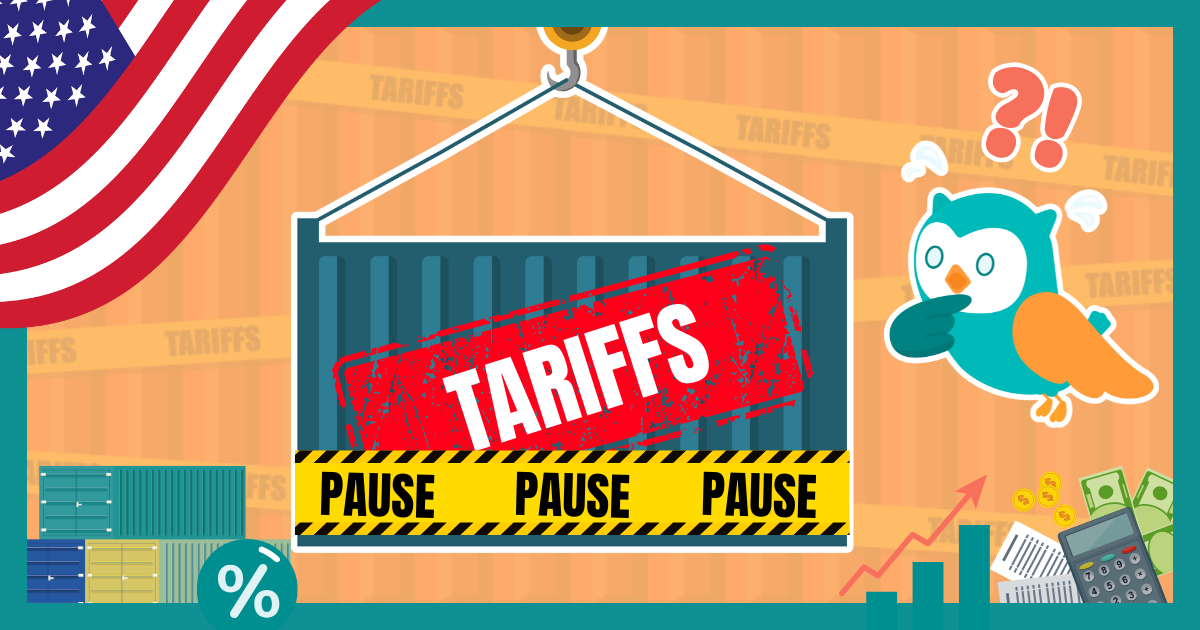Note: It was announced in November 2023 that MoneyOwl will be acquired by Temasek Trust to serve communities under a re-purposed model, and will move away from direct sale of financial products. The article is retained with original information relevant as at the date of the article only, and any mention of products or promotions is retained for reference purposes only.
______________
In just a few short months, the market has seen many upheavals and uncertainties. MoneyOwl’s Investment team highlights the key themes to look out for in the year ahead.
2021 was a year of uncertainty and anticipation, of hopes for a return to a degree of normalcy following the pandemic in 2020. We saw stock markets continuing to climb higher in 2021, with the S&P 500 hitting a series of all-time closing highs and ending the year near a record. Investors saw volatility in areas ranging from cryptocurrencies to so-called meme stocks, highlighting the importance and enduring benefits of long-term planning and flexibility offered by diversification in a fast-moving market.
As we enter the second quarter of 2022, here are the key themes that will probably continue to make news headlines.
State of inflation
Across the globe, from the developed to emerging markets, everything screamed inflation in 2021. However, after 2020’s economic shocks, we shouldn’t be surprised to see prices rebounding. The potential for inflation is one among many factors investors consider when investing but a look at historical average real returns (that is, returns net of inflation) to different asset classes in years with high (above-median) inflation from 1927 to 2020 shows that all assets except one-month T-bills had positive average real returns in high-inflation years.
The analysis of the period over 1927-2020 shows that inflation averaged 5.5% per year in high-inflation years, while average real returns were mostly lower in years with high inflation compared to years with low inflation. Overall, outpacing inflation over the long term by staying invested has been the rule rather than the exception.
Average annual real returns in years with above-median US inflation, 1927–2020

Tip: Instead of trying to time around inflation, stay invested in assets that will beat inflation in the long run. To cope with the short-term impact of inflation on daily necessities, it is timely to review your budget and adjust accordingly. This could mean tightening your belt on certain purchases.
Markets in an All-time High
In a similar way, there may be a tendency to think markets reaching a new high is a signal stocks are overvalued or approaching a ceiling. That was the main concern of the markets before the end of 2021 but given what has happened in the first month of 2022 with the global stock market declining, investors are now worried about entering because it seems that the markets could crash. Such concerns may be especially potent now. However, investors may be surprised to find that the average returns one, three, and five years after a new month-end market high/low are similar to the average returns over any one-, three-, or five-year period.
History shows that reaching a new high doesn’t mean the market will then retreat. In fact, stocks are priced to deliver a positive expected return for investors every day, so reaching record highs with some regularity is exactly the outcome one would expect.

Similarly, average returns one, three, and five years after market declines of more than 10% are similar to the average returns over any one-, three-, or five-year period.

Tip: There is no best time to enter the market because the long term returns eventually reverts to the long-term average. The greater loss is to stay out of the market as you hesitate, while the value of your money is eroded by inflation.
Cryptocurrency Market
Bitcoin and related cryptocurrencies (now numbering in the thousands) are the subject of much debate and fascination. Given Crypto’s dramatic price changes, it is not surprising that many are speculating about its possible role in a portfolio.
In its relatively short existence, the most prominent cryptocurrency (Bitcoin) has proved to be extraordinarily volatile, sometimes gaining or losing more than 40% in price in a month or two. Any asset subject to such sharp swings may be catnip for traders but of limited value either as a reliable medium of exchange (to replace cash) or as a risk-reducing or inflation-hedging asset in a diversified portfolio (to replace bonds).
Additionally, there are a few issues to consider:
Cryptocurrencies are not backed by an issuing authority and exists only as computer code, generally kept in a so-called ‘digital wallet’, accessible through a password chosen by the user. Many of us have forgotten or misplaced computer passwords from time to time and have had to contact the sponsor to restore access. No such avenue is available to holders of bitcoin. After a limited number of password attempts, a user can permanently lose access. Since there is no central authority responsible for bitcoin, there is no recourse for the forgetful owner.
Cryptocurrencies like Bitcoin are vulnerable to hackers on the web. A prominent example is Mt. Gox, a Tokyo-based bitcoin exchange launched in 2010, which was at one time the world’s largest bitcoin intermediary, handling over one million accounts in 239 countries and more than 90% of global bitcoin transactions in 2013. It suspended trading and filed for bankruptcy in February 2014, announcing that hundreds of thousands of bitcoins had been lost and likely stolen.
Cryptocurrency faces a huge barrier of regulation. One example is last year, The UK Financial Conduct Authority cited a number of concerns as it prohibited the sale of “Cryptoasset” investment products to retail investors. Among them were the inherent nature of the underlying assets, which have no reliable basis for valuation; the presence of market abuse and financial crimes in Cryptoasset trading; extreme price volatility; an inadequate understanding by retail consumers of Cryptoassets; and the lack of a clear investment need for investment products referencing them
All in all, Cryptocurrencies are not like cash, bond and equity. There is simply not enough evidence to establish it as a viable asset for investing. It is not recommended for investors to invest or “bet” their life savings on it, as too much risk will be left for uncertainties in the future.
Tip: While the future of cryptocurrency is exciting and financially gratifying for early adopters, we won’t recommend betting your life’s savings on it. If you want to join the bandwagon, invest no more than 5% of your wealth in crypto and enjoy the rollercoaster ride!
The rise of ESG investing
The trend of Environmental, Social and Governance (ESG) investing stems from many investors setting a priority of aligning their values with their investment strategy, now more than ever. However, the absence of a universally accepted definition of ESG investing has resulted in a broad array of approaches. This presents a potential dilemma for investors, as the components of ESG considered in an investment strategy, variables by which they are measured, and the method of incorporation can lead to a wide range of investment outcomes.
But rather than building the ground up with subjective methods, why not keep it simple and build from investing approaches that are working while excluding companies that do not fulfil the criteria/objectives of ESG? The ESG label is hardly prescriptive when it comes to investing, highlighting the importance of evaluating an investment approach based on one’s goals. If the concerns are with climate change, latest sciences have unequivocally pinpointed Greenhouse Gas (GHG) emissions as the primary contributor to climate change. Investors with concerns over climate change may seek out strategies with reduced exposure to companies and sectors that drive climate change through carbon emissions.
That means asking questions of the investment managers to evaluate which ones have delivered on the claim of reducing exposure to emissions vs. simply paying lip service. Investors should also be wary of claims by ESG managers that their sustainability funds will meaningfully impact climate change. There is a distinction between GHG emissions exposure in one’s asset allocation and actual GHG emissions in the real world: just because you’re not holding shares of a company doesn’t mean it stops burning hydrocarbons. As a result, while managers may use divestment to avoid companies with high greenhouse gas emissions, this does not mean that these types of strategies necessarily have a real-world impact. Investors should make sure that managers claiming to have actual real-world impact can provide objectively measurable reporting that backs up their claims.
Additionally, most ESG investors are focused on technology companies as they are usually companies that have the largest market caps and growth projections. However, there is so much more to ESG other than just technology companies, as the name implies. Investing with the ESG factor incorporated should be evaluated based on the overall company merits towards the three sustainability categories of environmental, social and governance instead of purely on “size” and “projected returns”.
Tip: Advertisements may mislead you to think that ESG investing will deliver higher returns. However, this is yet to be proven over the long term. Rather than invest in ESG to chase for higher returns, invest in ESG because it is aligned with your personal values and ensure that your ESG investments are truly making a positive impact to the world.
One-off events (Meme Stocks, China Debt Crisis)
Meme Stocks
One market curiosity arose in early 2021, when individual investors helped bid up shares of video game retailer GameStop. GameStop shares and other so-called “meme stocks” benefited from these investors’ enthusiasm. But as the price of GameStop climbed, along with its market cap, the small cap value stock quickly stopped being either.

The case of GameStop highlights the importance of having a systematic process in place to respond to new information about securities and their expected returns on a daily basis. In contrast, an index-tracking approach does not have the same flexibility to respond to price changes; by design, an index will wait to respond until its next periodic reconstitution date—potentially resulting in style drift. Some small cap indices holding GameStop quickly saw it become the largest index holding as the stock price increased, and those indices generally continued to hold it as the price fell. Daily portfolio management can spare investors from such style drift by rebalancing portfolios incrementally over time, keeping them focused on the targeted asset allocation and putting investors in a better position to capture higher returns.
Concentrating your portfolio in a few hot stocks or cryptocurrencies – like focusing on any small number of holdings –can expose investors to substantial risk. Even if you manage to find a few winners, research argues that good luck is unlikely to repeat throughout a lifetime of investing. For every individual who got into and out of a hot stock or cryptocurrency at the right time, there’s likely another who bought or sold at the wrong time.
China’s Evergrande Crisis
2021 taught us also that no company is too big to fail. Evergrande, which was China’s second-largest real estate developer and had amassed liabilities of about RMB2 trillion, equivalent to 2% of the gross domestic product, saw itself on the cusp of becoming the country’s biggest-ever bankruptcy case after the implementation of government-imposed debt limits. Credit rating agencies and seasoned analysts were torn over the government stance – whether they would let Evergrande fall to signal its determination to eliminate financial risk from the system, or that it would swoop in at the last moment to rescue the beleaguered company to prevent widespread impact on the economy.
Portfolios that track the index and hold onto these bonds purely based on its credit ratings would have suffered a blow when Evergrande finally defaulted, compared to portfolios where there is active risk monitoring. In the latter case, exposure to Evergrande would have been reduced or fully sold off before credit ratings were adjusted. This part of active management on fixed income instruments is good for investors and is exactly what our WiseIncome fund did during the Evergrande crisis. The approach requires an intimate knowledge on the market but proves to be fruitful in decreasing downside volatility for the overall portfolio.
Why you can’t trust forecasts
At the end of the day, it is the norm for investors to look for predictions or directions about investing. Crowds tend to follow “experts’” who claim to have a crystal ball, but the truth is no one has it. A look at the news headlines for equity market predictions for the past two years will prove the point.

The above is an extract from an article on a survey done on Wall Street professionals published by Bloomberg in January 2020. You would expect that finance professionals that are the experts in the field of investing would be able to forecast the market relatively well compared to the average investors. At the time when the article was published, market outlooks were on average positive on Wall Street. But COVID-19 hit and the following news article was published in March 2020.

In March 2020, the “professionals with the crystal ball” were panicking as the market crash that accompanied the pandemic infected the global economy. The article above was talking about the Australian market, crashing 11% in a week and 37% below its all-time highs. Many people were thinking about getting out of the market completely, but as we all know what happened after March 2021, the market bottomed and going forward nine months later…

World equity benchmarks hovered near record highs. This was after the Biden election result, announcements of funding of vaccines and prospects of more monetary stimulus. Investors were suddenly a lot more comfortable with the prospects of the future. This was within a space of nine months! The forecasts at the beginning of the year (January 2020) were long forgotten by then.
It is not right to dismiss the people making the forecasts at the beginning of the year. They were just doing their job and probably made their forecasts based on a fair amount of research. But the nature of the way the world works is things change and there is never a reliable prediction of the future because we do not know what will happen next. But when a forecast is released, it sets expectations that the world will remain static, and most investors accept the expectations as the “future”.
Decades of evidence has shown that over time the financial markets have rewarded long-term investors. People expect a positive return on the capital they supply, and historically, the equity and bond markets have provided growth of wealth that has more than offset inflation, which is represented by the US Consumer Price Index (US CPI). The key is in letting the markets work for you in compounding your capital over the long term.

Tip: Rather than chase forecasts and try to time the market, depend on financial science and historical evidence to help you develop an investment strategy that will give you the highest probability of achieving your goals.
Key Takeaways
Investing should be a pursuit of happiness; the wise decision is to not take on the additional risk of losing your future welfare when you can invest with the knowledge that the market will reward you in the long term with sufficient “expected returns” to achieve your goals.
You would be better served sticking to a long-term plan as the immediate future is always uncertain and there is always something to worry about. The possibility of unwelcome or unexpected events should be addressed by the portfolio’s initial design through deciding allocation to stocks and bonds that you are comfortable with and holding a globally well-diversified portfolio to weather volatility rather than by a hasty response to stressful headlines in the future.
In addition to the unpredictability of the markets, there is also uncertainty in our personal lives. A medical crisis or a job loss can easily cause our plans to derail. We should deal with these unexpected events by ensuring we have set aside an emergency fund or having the right insurances in place to buffer us from these shocks, rather than depend on our investments to tide us through these events. This way our portfolio will have the runway to achieve its intended outcome.




